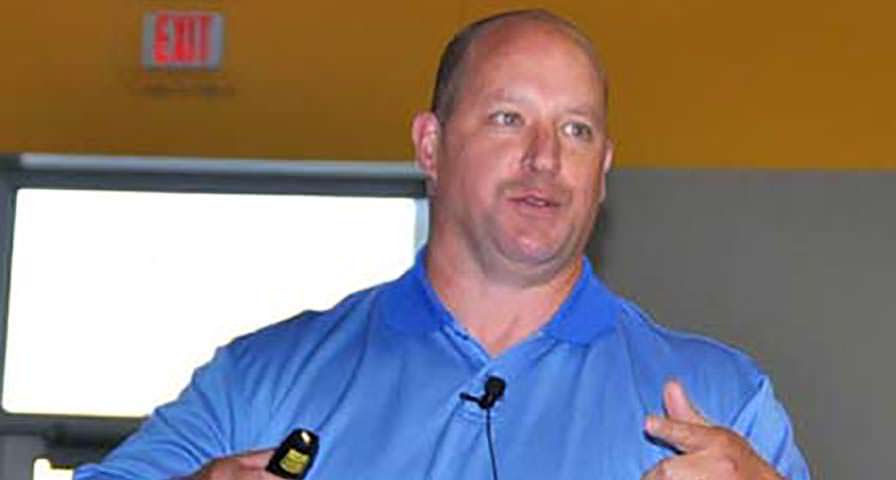Aug. 24, 2016
During our Advisory and Innovation Summit, some of the country’s top physical education experts discussed the wearable technology transformation and the concerns of protecting their investments in new technology. The experts agree that a self-funded insurance model provides schools the biggest benefit.
Focused primarily on our new IHT Zone monitor, teachers and administrators wanted to know how they could increase loss prevention and protect themselves from extra costs by damage or loss. Ryan Welnetz, principal at Suamico Elementary School in the Howard-Suamico (Wisc.) School District, detailed how his district charges a supplemental fee for students to use iPads and laptops throughout the school year, how the self-insurance program protects both school and individual from damage and how a similar plan might work for new devices that students share across multiple class periods. This information is helpful in supporting schools using the Zone and IHT Spirit System as well.
School-issued devices becoming the norm
According to reports published a year apart by EdSurge and The Journal, one in three U.S. students use school-issued technology. In England, the BBC reports that schools provide tablet computers to 7 of 10 students. Apple and Google rank among the most popular school-provided devices.
- Apple had sold more than 4.5 million iPads to schools by 2013
- Google had partnered with more than 2,000 schools by 2013
Howard-Suamico School District (HSSD) provides students with either iPad Air tablets or MacBook Air computers. The devices represent a major investment for students: 64 GB iPad models retail for $499 and 11-inch MacBook Air laptops start at $899. Google’s Chromebooks start as low as $180, which includes a management fee. While schools don’t pay retail prices, the cost to provide devices to students remains significant.
Allowing students access to modern technology is great, but in the hands of K-12 students, how can we protect our investment into education? Two resolutions becoming more prevalent are technology fees and the accompanying guidelines.
Devices come with technology fee
HSSD provides devices for students once they reach the third grade: iPads for younger students and MacBook Air laptops for high schoolers. The district charges a technology insurance fee on each device, both non-refundable after 15 days.
- iPad – issued to students in grades 3-8: $35 annual fee
- Students keep devices during the school year only
- MacBook Air – issued to students in grades 9-12: $99 annual fee
- Students maintain possession of device through 12th grade
The fee covers families for two instances of accidental damage. Other guidelines include:
- After two repairs, subsequent repair costs are shared evenly between HSSD and family
- Damage reports must be filed with the HSSD Media Center within 48 hours
- Stolen devices must include a police report
Other school systems charge different fees dependent on the device and the demographics, and most provide waivers for families in free or reduced-cost lunch programs.
- Stanly County (N.C.) provides Chromebooks; fee ranges from $5-$15 per student
- Craven County (N.C.): provides iPads and other laptops; fee is $20 per student
- Ridley School District (Penn.): provides iPads; fee is $30 per student
- Mountain Middle School (Colo.) provides Google-based laptop; fee is $150 per student.
Self-insurance policy guidelines
While HSSD purchases or leases its devices from Apple, the district does not purchase Apple’s support option, AppleCare. That choice results in significant savings for HSSD. Though school districts often get price breaks based on large-volume orders, support remains costly.
- iPad AppleCare support: $99
- MacBook Air AppleCare support: $249
By declining AppleCare, HSSD needed to come up with its own policy. The HSSD self-insurance plan covers all damage short of the obviously intentional and loss.
“Unless it’s blatant…the kid picks it up and throws it against the wall or stomps on it with his foot, it’s covered in full,” Welnetz said.
In those cases:
- HSSD invoices family full replacement cost of damaged device
- Full replacement cost determined by current market value
- Districts must develop collections policy
The repair process strives to keep devices in students’ hands. To accomplish that, HSSD purchases extra devices as part of its initial order. Having a surplus of devices comes at an extra upfront cost to the district, but Welnetz said it’s part of the cost of providing students with devices, making sure they don’t lose access to information or assignment during the repair.
Insurance on shared devices

How schools ensure devices shared by multiple classes or students is a largely undeveloped space. Bay View Middle School, also in the HSSD, utilizes IHT Spirit System chest strap heart rate monitors at present but will be adding Zone monitors this fall.
“When you share from class to class, it gets a little tougher,” Welnetz said of the logistics around distributing and collecting monitors for each class.
Thanks to the Spirit System’s design, theft or loss becomes less of an issue. The pick-up and return method takes shared device insurance into account. Each monitor is assigned to a specific student, which allows teachers to identify which students haven’t checked devices back in at the close of class. With this strategy, schools know who to contact if devices go missing.
We see the benefit of a self-insurance plan for schools using these shared devices. Schools can charge a small fee — a percentage of the device’s retail price — and create a pool by which they can purchase replacements when necessary. A benefit: if the fund has money left at the end of the school year, that money could be used to fund the next round of Zone purchases.
IHT developed the Zone as a tool to improve physical education, helping students see their exertion level and understand how that impacts their health and well-being. We appreciate that schools dedicate precious financial resources to purchasing this type of technology and we want to help protect that investment.


